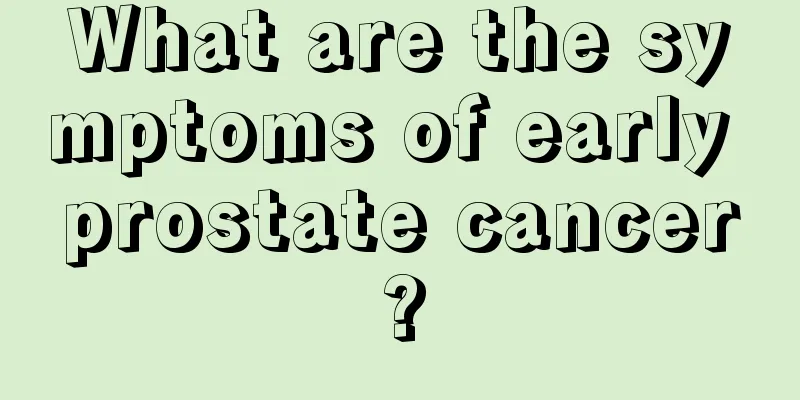What are the hazards of cervical precancerous lesions? 1/3 of cervical precancerous lesions will turn into cancer

|
Cervical cancer/4 to 1/3 of cervical precancerous lesions will transform into cervical cancer In Professor Wu Yumei's clinic, about thousands of patients are diagnosed with cervical precancerous lesions every year, and about 200 cases are diagnosed with cervical cancer, half of which are diagnosed in the early stage and can be operated, and about half are in the late stage and have lost the opportunity for surgery and can only undergo radiotherapy and chemotherapy. Professor Wu pointed out that about 1/4 to 1/3 of cervical precancerous lesions will transform into cervical cancer. The incidence of cervical cancer has increased year by year since the age of 30. There are two high-incidence age groups, one to 49 years old and the other 59 to 60 years old. Precancerous lesions are 5-10 years earlier than cervical cancer. 30-35 years old is the age group where precancerous lesions are concentrated. Therefore, women over 30 years old need to check cervical cells once a year. Pap coating must be operated by experienced laboratory personnel to ensure its accuracy. The main cause of cervical cancer is high-risk human papillomavirus (HPV), and more than 99% of cervical cancer patients are caused by it. There are 13 high-risk HPV viruses, two of which are the most risky - HPV16 and 18, which can cause 70% of cervical cancer. At present, the initial screening of cervical cancer mainly uses cervical exfoliated cytology. Pap smear cytology was introduced 60 years ago and mainly checks cervical cell mutations rather than whether there is HPV infection. However, the pasteurized coating must be operated by experienced laboratory personnel to ensure its accuracy. Liquid-based cytology testing (TCT) has been used for nearly 10 years, cervical cancer screening and production technology, which has improved the positive rate of cervical cancer screening. At the same time, the high-risk HPV used in the past 10 years can further understand the genetic detection of HPV infection, which provides an additional means for cervical cancer screening. In March this year, the American Cancer Society updated the cervical cancer screening guidelines, recommending that women with cervical cancer screening age from 21 to 65 years old, cytology examination (Pap smear) every three years. Women 30-65 first promote the cytology consortium HPV test every 5 years to extend the screening interval. It is not recommended for women under 30 years old to use it alone. HPV testing or combined cytology. Cervical cancer screening is not recommended for women over 65 years old. The combined detection method of Pap smear and high-risk HPV gene detection can improve the sensitivity of cervical cancer screening Asia ended not long ago - at the annual meeting of the Oceania Genital Infection and Tumor Research Organization, experts called for a re-discussion of the management guidelines for cervical cancer in the Asia-Pacific region to reduce the high mortality rate of this preventable disease. Professor Zhang Yaxian, director of pathology at the University of Hong Kong's pasteurization laboratory, said, "The latest HPV gene detection technology can help us detect problems early after women are infected with HPV and before cell mutations or cancer occur. The combined detection method of Pap smear and high-risk HPV gene detection can improve the sensitivity of cervical cancer screening. For some places that lack resources, supporting facilities and manpower, high-risk HPV gene detection is also a good choice for screening." It is reported that Roche cobas4800HPV test has been certified by the China Food and Drug Administration. Professor Wu Yumei emphasized that people's awareness of cervical cancer screening is crucial, and accurate screening methods are a strong guarantee for early detection of precancerous lesions and early cervical cancer. Early detection of precancerous lesions can nip cervical cancer, the "pink killer", in the bud. More hot articles recommended by the Tumor Channel Three magic weapons for cancer prevention Don't let the 7 major carcinogens fall in love with you Ten "three-anti" foods to help you escape cancer 6 major factors leading to ovarian cancer 4 types of food "brake" Physical examination + life details to find out the six "invisible cancers" 14 dietary rules to make cancer no longer your fan |
<<: What should I do with uterine fibroids? How can I prevent uterine fibroids?
Recommend
Is there a possibility of misdiagnosis in biopsy
Biopsy is a commonly used examination method in m...
Is surgery necessary for 87-year-old bladder cancer?
Whether an 87-year-old bladder cancer patient sho...
Experts introduce typical symptoms of bone cancer
Bones are prone to disease, and the most serious ...
Does advanced bladder cancer hurt?
This type of pain is a type of cancer pain, which...
Sitting in the office for a long time can lead to a high incidence of cervical cancer. What are the other causes of cervical cancer?
According to statistics from the World Health Org...
What are the symptoms of ovarian cancer recurrence
Ovarian cancer is very serious. It is a serious m...
The principle and function of scraping
Gua Sha is a traditional health therapy, which ma...
What causes dry stool?
People who often have dry stools must pay attenti...
Causes and treatments of intracranial aneurysms
Intracranial aneurysm is a disease that occurs on...
Is liver cancer contagious in late stage? How to prevent liver cancer in daily life?
Is liver cancer contagious? Liver cancer is a typ...
Which ingredients of lotion have anti-inflammatory and repairing effects?
Lotion is a kind of skin care product that we use...
What to do with acne? Teach you some tricks to eliminate
In real life, it is very distressing to have acne...
How to wear diapers for newborns
Newborn babies will wear diapers, but for novice ...
Can coix seed and millet be eaten together
Job's tears is a very good grain crop for rem...
Where can I use moxa sticks to treat gynecological diseases
Moxa sticks have many functions and have always b...









